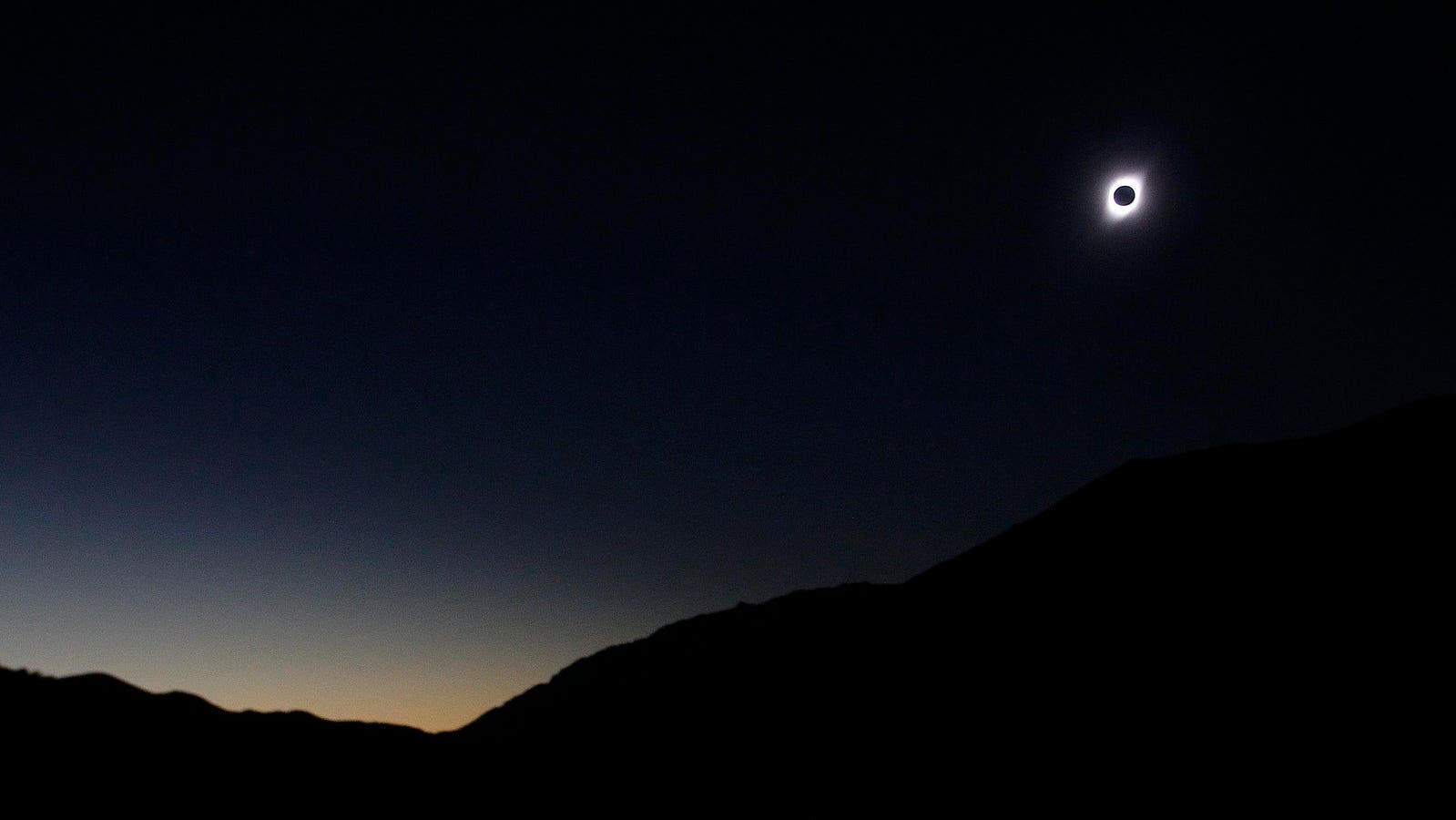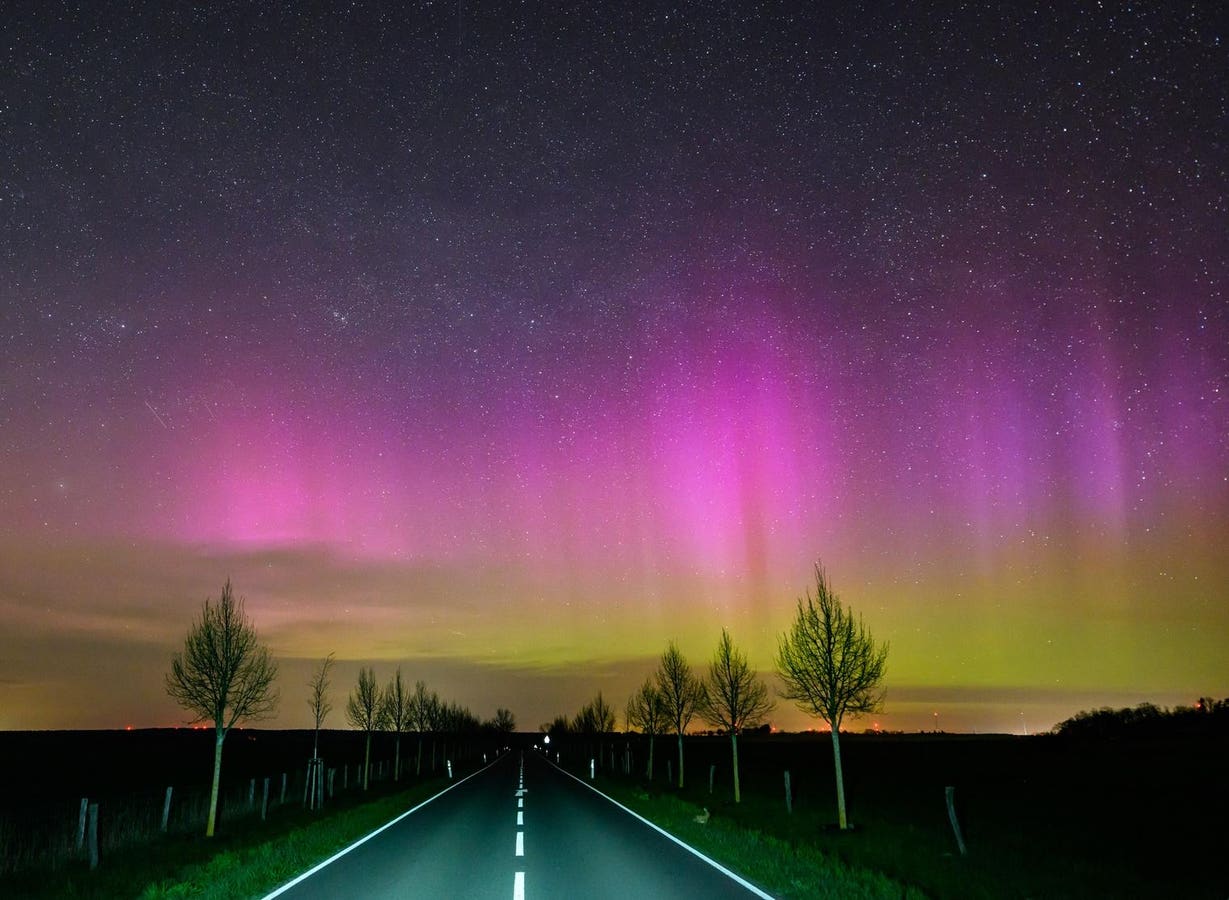A total solar eclipse on July 2, 2019 in Paiguano, Chile. (Photo by Marcelo Hernandez/Getty Images)
Getty Images
What will happen on Aug. 2, 2025? There will be no total solar eclipse on Aug. 2, contrary to posts going viral across social media that suggest otherwise. There are claims that on Aug. 2, “the world will go dark for 6 minutes” and that it’s a “sight you won’t see again for 100 years.” Is it true?
Nothing will happen on Aug. 2. For starters, no solar eclipse — now or in the future — can cause the entire world to go dark at once. It’s impossible for the whole world to go dark at the same time (Earth always has a dayside and a nightside). What the posts are mistakenly referring to is a six-minute total solar eclipse, which is happening on Aug. 2 — not in 2025, but in 2027. It will bring the longest remaining totality of the 21st century.
The sun disappears behind the moon during the Great North American Eclipse on April 08, 2024 in Mazatlan, Mexico. (Photo by Hector Vivas/Getty Images)
Getty Images
2027’s Total Solar Eclipse
On Aug. 2, 2027, a total solar eclipse will affect parts of Europe, North Africa, the Arabian Peninsula and the Horn of Africa. This will be a total solar eclipse with an extraordinarily long totality, but only for those in one specific place. That place is Egypt, with totality lasting 6 minutes 22 seconds close to Luxor, the temple-stewn capital of ancient Egypt.
Luxor may be where a lot of eclipse chasers are heading, but there’s plenty of choice. The path of totality will, in order of when totality will happen, be seen in southern Spain, northern Morocco, northern Algeria, northern Tunisia, northern Libya, Egypt, Saudi Arabia, Yemen and Somalia. According to TimeandDate, 88.9 million people live in that path of totality.
Does it go dark during a total solar eclipse? Yes and no. The light levels drop dramatically once the moon blocks all of the sun, but it’s more of a deep dusk. But will the “world go dark?” Hardly — the 2027 total solar eclipse will be visible from a 160-mile (275 kilometers) wide path of totality stretching 9,462 miles (15,227 kilometers).
Aerial View of The temple of Hatshepsut near Luxor in Egypt, where a total solar eclipse on Aug. 2, 2027, will bring six minutes of totality.
getty
It’s Part Of A Cycle Of Long Eclipses
Total solar eclipses are predictable. If you come across a particularly long one — such as Aug. 2, 2027 — turn the calendar back 18 years, 11 days, and 8 hours (the time it takes for the moon to orbit the Earth 223 times) and you’ll find another one. On Jul. 22, 2009, a totality lasting as long as 6 minutes and 39 seconds was possible in the Pacific Ocean southeast of Japan. It was the longest of the century, but few experienced it as its maximum (and, worse still, most people in China were clouded out). Fast-forward 18 years, 11 days, and 8 hours from Aug. 2, 2027, and you’ll get to Aug. 12, 2045, and a very long total solar eclipse across the U.S., the Caribbean and South America. At maximum, totality will last 6 minutes and 6 seconds — near the southeast coast of Florida.
All of these eclipses — 2009, 2027 and 2045 — are members of a family of moon shadows called Saros 136. Saros means “the repetition,” a concept used by ancient Greeks to predict eclipses.
Wishing you clear skies and wide eyes.









